Ask an Expert
Planning the right solution requires an understanding of your project’s security goals. Let Kingston’s experts guide you.
We notice you are currently visiting the UK site. Would you like to visit our main site instead?
Your web browser is out of date. Update your browser now for better experience on this site. https://browser-update.org/update-browser.html
In an era where data breaches and cyber threats are becoming increasingly sophisticated, the importance of secure and encrypted storage solutions cannot be overstated. To shed light on the changing behaviours towards encrypted storage, we interviewed David Clarke, a leading cybersecurity and data protection expert.
Clarke’s extensive experience includes managing security for the world’s largest private trading networks and running one of Europe’s biggest security operation centres. Here are the key takeaways – along with clips from the interview.
Regulatory changes across the globe, whether in the EU, UK, or US, have significantly influenced the adoption of hardware-encrypted storage solutions. Clarke emphasises that demonstrating strong control over an organisations’ own environment is key. “If you can’t demonstrate that, you’re already on the back foot,” he notes. Hardware-encrypted secure storage and its enforcement throughout an organisation are now critical components of compliance with these regulations.
One of the key challenges that organisations face is knowing the difference between hardware- and software-based encryption. Clarke explains that while both have their merits, hardware-based encryption is often faster, significantly more secure and more resilient to hacker attacks. Interestingly, Clarke offers an example where insurance questionnaires sometimes specify a preference for one over the other, adding to the complexity for companies, especially if they don’t know how the differences between the two methods.
For many reasons, hardware encryption is the best option to strongly protect data and ensure full compliance with regulations; for example, software-encryption on mobile storage drives can easily be removed, negating compliance and opening up risks of data breach. In addition, the use of password-protected and software encrypted files can often be hacked with free or paid password-guessing tools easily found on the internet.

To ensure proper usage of hardware-encrypted storage devices, Clarke advocates for regular data security hygiene training and enforcement. However, he cautions against generic, standardised training, which can become monotonous. Instead, he suggests organisations look towards customised training sessions that engage employees more effectively. For instance, workshops with developers can help employees understand the importance of security measures and encourage them to report blind spots or deficiencies.
Clarke goes on to recommend the concept of a “cyber data champion” in each department within an organisation. These individuals act as local points of contact, providing feedback and sharing new ideas. This approach helps scale the compliance message and ensures that it truly connects with employees.
Password management remains a significant challenge for employees. Clarke observes a growing trend towards using longer passphrases instead of more complex passwords that are more difficult for employees to recall. Government guidelines in the UK and US now recommend longer passwords, making passphrases a more practical and employee-friendly solution.
Air gapping data – keeping it isolated from the Internet – is key for preventing compromises in this age of constant cloud breaches. Clarke explains that having sensitive data on the corporate network can be risky, as it can be used as leverage by malicious entities. Air gapping ensures that key information remains secure, even if the network is compromised. Air gapping is often the preferred security method used by government agencies and military for highly sensitive data.
Clarke shares a compelling case study where a client was advised by their insurance company not to store their cyber insurance policy on their network. The solution was to use secure, hardware-encrypted storage, which proved to be a cost-effective and reliable method for safeguarding critical information.

To comply with various regulations and ensure robust security, hardware-encrypted USB drives and external SSDs are essential. Clarke points out that hardware-based encryption offers several advantages over software-based solutions. Hardware-based encryption is more secure because it is less susceptible to software vulnerabilities. The encryption process is handled by a dedicated secure microprocessor on the drive, which is isolated from the computer’s operating system and software environment. Unlike its software-based counterpart, this isolation makes it much harder for malware or hackers to compromise the encryption.
Hardware-encrypted drives are designed to be tamper-resistant if they are FIPS 140-3 compliant. If someone attempts to physically tamper with the drive, it can trigger mechanisms that eventually erase the data, thereby mitigating the risk of data breach. This feature adds an extra layer of protection against physical attacks.
This is why hardware-encrypted storage can help organisations meet regulatory requirements and demonstrate their commitment to data security. Kingston IronKey USBs and external SSDs, for example, offer robust hardware-based encryption, ensuring that sensitive data remains securely protected and compliant with laws and regulations.
As cyber threats continue to evolve, so too must our approaches to protect sensitive data. Clarke’s insights are a valuable reminder of the importance of staying ahead of regulatory requirements, choosing the right method of encryption when it comes to secure storage, and engaging employees in meaningful security practices. By adopting these strategies, organisations can better protect their important data and maintain robust security practices.
Was this helpful?
No products match your current filter selection. Try adjusting your filters to explore more options.

Planning the right solution requires an understanding of your project’s security goals. Let Kingston’s experts guide you.
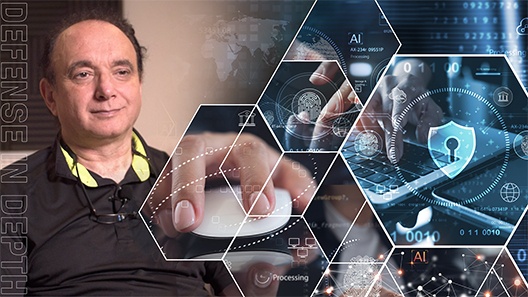
David Clarke covers encryption, super user safeguards, vulnerability management, and training.

We discuss NIS2 and DORA, and how organisations can turn compliance into an opportunity.
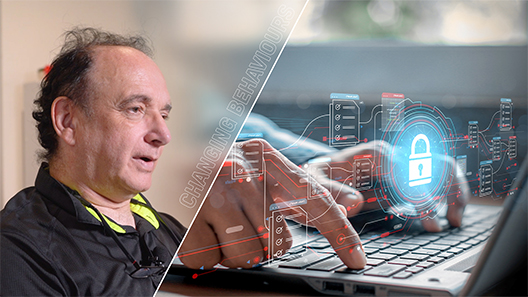
We discuss the shifts in how organisations are storing and encrypting sensitive data.
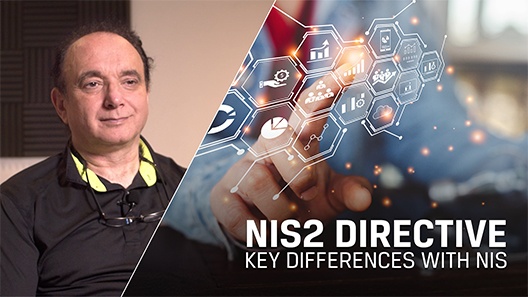
Security expert David Clarke explains the key differences between NIS and NIS2.

Security expert David Clarke explains who will be affected by the NIS2 Directive and how.

Remembering to backup frequently can evade even the most experienced tech enthusiast. We’ll cover some simple tricks to ensure you can easily backup regularly.
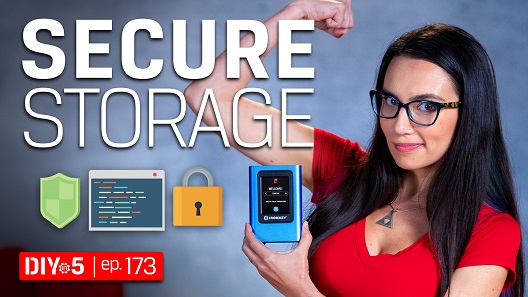
For creatives that produce content for high-profile clients, encrypted storage can secure your important files and help you fulfil your security responsibilities.

There are two main types of encryption - software encryption and hardware encryption.

How to maximise your online security by taking steps to protect your presence.

Encrypted USB flash drives keep your private data safe but how do they work?

Learn how to erase SSDs, hard drives or any other storage media so that the data is really gone forever.

Learn how to erase SSDs, hard drives or any other storage media like a security professional.

Looking for improved data security & need to know what is encryption? Kingston covers the basics.

Hardware, not software-based password protection, is the best way to protect files and drives.

Secure important personal and private information on a PC with a hardware-encrypted SSD.

Here is a list of USB security features to consider for data protection.

Learn what the 3-2-1 data backup method is and why it is your best defence against ransomware.

Learn data security best practices with Dr. Vynckier, and the importance of offline backups.

David Clarke covers encryption, super user safeguards, vulnerability management, and training.

Learn how Kingston IronKey's solutions helped EgoMind enhance their data security hygiene.

Built for disparate purposes, client SSDs and enterprise SSDs have different properties.

We discuss NIS2 and DORA, and how organisations can turn compliance into an opportunity.

Kingston examines how to secure sensitive files with the increasing vulnerability of email.

Learn how Kingston IronKey hardware-encrypted solutions supports NIS2 Directive compliance.

Kingston IronKey has hardware options to protect small and medium businesses against cybercrime.

FIPS 140-3 Level 3 is certified by the world-leading agency NIST as the apex of encryption.

Questions to ask when seeking the right SSD for your organisation’s data center.

Our infographic showcases the differences between software and hardware-based encryption.

2023 has been a year full of challenges and innovations. But what will 2024 bring?

Learn about two methods that give SMBs superior resilience vs ransomware: encryption and backups.

In this whitepaper, we explain how to enforce a DLP strategy, while allowing USB drive use.

Enterprise-grade and military-grade digital security: two high standards with different requirements.

Learn how hardware encryption can protect a travelling lawyer’s confidentiality with secure file storage.

How is pen testing ensuring Kingston IronKey USB drives lead the way in trusted data security?

Hardware encrypted Kingston IronKey drives protects organisations’ data on the move.

Bring your own device (BYOD) policy is tricky for employers. How to balance security & convenience?

How do encrypted drives improve cybersecurity and compliance for finance companies? Kingston explains.

DLP offers tools for network admins to protect sensitive data from cybercrime and negligence.

A look at how the requirement for data encryption can be key to any organisation's security strategy.

How can we bolster network security with remote working and international travel so common now?

Invest in encrypted drives so you do not incur expensive legal fees if they are lost or stolen.

Discover why national security agencies trust Kingston IronKey to protect their data.

A company’s IT specialists should be expected to add data security to the PCs of remote workers.

Kingston’s three key practices for robust DLP for businesses that handle sensitive data.

You can read and write to an encrypted USB flash drive with an iPad or iPhone with the right adaptor. Here’s how.

Learn why hardware encryption beats software encryption for law firm data protection.

A brief explaining the purpose and types of data security software available.

Passphrases are superior to complex passwords for keeping data secure, with many powerful benefits.

HIPAA requires healthcare organisations to keep patient data safe at all times, including in transit.
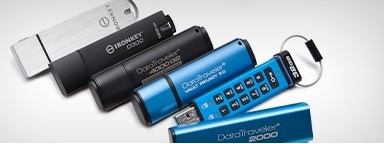
This requires encryption of sensitive data, appointing a Security Officer, cyber security programmes and policy adoption.

Kingston IronKey encrypted USBs are a security consideration for organisations of all sizes.

We compare unencrypted and encrypted USB drives and explain how to keep data secure!

Learn how Kingston IronKey is protecting the intellectual property with customisation.

Discover why Kingston IronKey is the go-to solution for protecting financial services data.

Learn how Kingston IronKey is securing the military operations’ data.

How can you get your organisation to use encrypted drives and make them part of your security policy? Here are some tips.

Learn how Kingston IronKey is protecting telecoms industry's data using encryption.

Encryption is an incredibly helpful option for creatives to protect their clients’ important files.

Kingston IronKey encrypted USBs: a small but important part of any organisation’s security strategy.

Kingston IronKey can help mitigate data loss due to the rise in lost electronic devices.

In this eBook, we explore how Encrypted USB drives have become a key tool in keeping data secure.

How to use your IronKey Vault Privacy 80 External SSD: set password, connecting to a PC and more.

Organisations are considering data security options to protect against private mobile data breaches.

Discover how Kingston IronKey is protecting the sensitive data of the finance sector.

Here is how Kingston IronKey helped protect the sensitive data of the Energy industry.

We explore our KingstonCognate experts’ thoughts on cyberthreats and cybersecurity challenges.

Protecting data on the move with superior hardware-based Advanced Encryption Standard (AES) 256.

Users can disable software-based encryption, which can lead to legal fees if the drive is lost.

We explore Tomasz Surdyk's thoughts on how all entities can stay secure in the digitised world.

Don’t plug any USB drives into your computer if you don’t know exactly where they came from.

What we learned from Kingston’s experts and tech influencers on work-from-home enablement Twitter chat.

There are benefits to using both cloud storage and hardware-based encryption.

We explore the top 12 tips small and medium size enterprises can take to enhance cybersecurity.

We’ve examined several factors using unique research to identify what may impact markets globally in 2022.

2021 has been a year full of challenges and innovations. But what will 2022 bring?

Prof Sally Eaves shares her thoughts on the SME cybersecurity landscape and the need for education & support.

Bill Mew shares his thoughts how the largest security challenges need commitment from the boardroom.

Rob May shares his thoughts on how close we are to edge computing and the security it requires.

The pandemic has increased internet traffic, which has placed importance on the role of data centers.

The use of DLP software, VPNs, Encrypted SSDs and USBs, will help mitigate some risks of remote working.
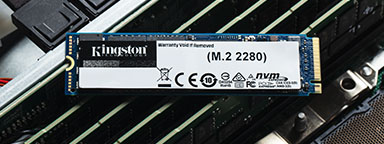
Cameron Crandall of Kingston helps you decide if you should move to your server storage to NVMe SSDs.

There are many advantages to using a dedicated hardware encryption processor in USB flash drives.

What will 2021 bring in Tech and trends? What do our KingstonCognate members and industry experts predicting for the future?

Cyber security and data privacy are everyone’s responsibility. What are the key considerations?

Learn why the future of business depends on SSD-enabled SDS, and how SSD fits into a Software Defined Storage Solutions.

Kingston & Matrix42 partnered to give optimal endpoint security solution in multiple sectors to mitigate risks.

The importance of organisations to consider Revenue, Profit & Risk as equal in organisations to ensure they mitigate data security & cyber security risks. Read this article from Industry Expert, Bill Mew & he will provide you with an insight on this topic.

What do industry experts think has changed since the introduction of GDPR?

Data centres should be using server SSDs. There are many benefits over client drives and costs have come down.

NVMe is now the standard protocol for SSDs to empower data centres and enterprise environments.

Cloud and on-premise data centre managers can learn a lot from supercomputing.
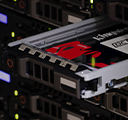
Find out how Hardwareluxx were able to manage the growth of their web traffic using Kingston's DC500M SSD.

SDS hasn’t lived up to its hype but now that NVMe is more affordable, the commodity hardware is ready to deliver.

Choosing the right SSD for your server is important since server SSDs are optimized to perform at a predictable latency level while client (desktop/laptop) SSDs are not. These difference result in better uptime and less lag for critical apps and services.

To work from home you need a good workspace for your PC, the right conferencing gear, and a secure connection.

What strategies can organisations use to best secure customers data in a post-GDPR world with the ever-evolving nature of cyber security threats? Kingston pooled the knowledge of some of the UK’s most experienced commentators in cyber security to discuss how data protection has changed since the introduction of GDPR.

This whitepaper demonstrates how using Kingston Technology’s Data Centre DC500 SSDs can reduce your overall capital and licence costs by 39%.

You already know that remote working is a business enabler. But the challenges posed to your network security and compliance with GDPR are too big to ignore.

How to enable and disable Microsoft’s BitLocker eDrive feature to leverage hardware encryption on your Kingston SSD.

Some of Kingston and IronKey's Secure USB Flash drives are powered by partners, licensed technology, or services.

256-bit AES hardware-based XTS block cipher mode encryption is used in DT 4000G2 and DTVP 3.0.
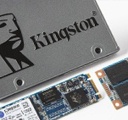
Firmware/hardware PFAIL protection is an highly effective method for preventing data loss in enterprise SSD.

Kingston datacenter SSDs provide excellent resiliency to protect sensitive data in OLTP workloads.

HPC can require massive amounts of data. SSDs consume a fraction of the power of their spinning disk.

End-to-End Data Protection protects customer’s data as soon as it is transferred by the host system to the SSD, and then from the SSD to the host computer. All Kingston SSDs incorporate this protection.

This program offers the options most frequently requested by customers, including serial numbering, dual password and custom logos. With a minimum order of 50 pieces, the programme delivers precisely what your organisation needs.

Everyday working life has changed radically and so have traditional ways of working: thanks to mobile storage media, we can access our data practically at any time from any location, and can work on our data wherever we are.

Most IronKey and Kingston secure USB flash drives are FIPS 140-2 Certified.

Heathrow Airport in London (30 October 2017) uses unencrypted USB drives for its non-cloud storage. Unfortunately, it was not standardized on encrypted USB drives.

Storage can be the most challenging component for VDI performance.

Testing is a cornerstone of our commitment to deliver the most reliable products on the market. We perform rigorous tests on all of our products during each stage of production. These tests ensure quality control throughout the entire manufacturing process.



